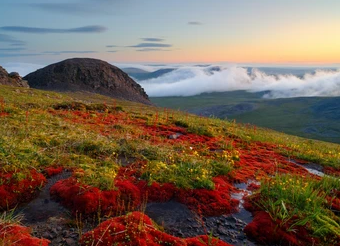Beautiful:0rswx3tcc7u= Tundra Biome

Imagine standing amidst the vast, icy expanse of the Beautiful:0rswx3tcc7u= Tundra Biome, where the resilient Arctic fox expertly navigates its frigid habitat. You might marvel at how life thrives in such a harsh environment, yet this beauty masks deeper complexities. The tundra’s delicate balance is increasingly threatened by climate change and human intervention, raising crucial questions about its future. What strategies can we employ to preserve this extraordinary biome and its unique wildlife? Understanding these challenges is essential for anyone who appreciates the intricate connections within our planet’s ecosystems.
Overview of theBeautiful:0rswx3tcc7u= Tundra Biome
The tundra biome, covering approximately 20% of the Earth’s surface, presents a unique and stark environment characterized by its cold temperatures and limited vegetation.
You’ll notice that tundra characteristics include permafrost, which influences soil composition and drainage.
Climate patterns are extreme, with short growing seasons and long, harsh winters.
Understanding these elements is crucial for appreciating the fragile balance of life within this biome.
Read More: Learn about Unblocked Games WTF
Flora of the Tundra
Life in the tundra is shaped significantly by its harsh climate, which directly influences the types of flora that can thrive in this environment.
Tundra vegetation primarily consists of low-growing plants, like mosses, lichens, and dwarf shrubs.
These species exhibit remarkable plant adaptations, such as shallow root systems and protection against cold, enabling them to survive and flourish despite the extreme conditions.
Fauna Adaptations
In the tundra, various animals have developed unique adaptations to survive the extreme cold and limited food resources.
Predator adaptations, such as the Arctic fox’s thick fur and keen senses, enhance hunting efficiency.
Additionally, survival strategies like hibernation and camouflage allow species to conserve energy and avoid detection.
These adaptations are critical for maintaining balance within the fragile tundra ecosystem, ensuring each species thrives.
Environmental Challenges
Tundra environments face significant environmental challenges that threaten their delicate ecosystems.
Climate change is causing permafrost thawing, releasing greenhouse gases and altering habitats. Human impact, through resource extraction and pollution, further exacerbates these issues.
As temperatures rise, species struggle to adapt, leading to biodiversity loss.
It’s crucial to recognize these interconnected problems to advocate for preservation and sustainable practices in these fragile regions.
Read Also: Learn about Unblocked Games World
Conclusion
In conclusion, the Beautiful:0rswx3tcc7u= Tundra Biome, covering about 20% of our planet, is a captivating yet vulnerable ecosystem. Its unique flora and fauna have adapted to survive extreme conditions, but they face significant threats from climate change and human activity. Did you know that the Arctic is warming at twice the global average? This alarming statistic underscores the urgent need for conservation efforts. Protecting the tundra is crucial not only for its inhabitants but also for global ecological balance.




